I’ll admit it—I was pretty bummed when I heard SC Johnson Paste Wax was discontinued. That trusty yellow can with the red stripe had been my go-to for years, whether I was protecting my table saw from rust or giving my wooden furniture a warm, satin glow.
The news hit me like a rogue splinter: sharp, unexpected, and a little irritating. But instead of shelling out $50 for a dwindling online supply, I decided to roll up my sleeves and hunt for alternatives.
My goal?
Find something that matched Johnson’s ease, durability, and versatility—without breaking the bank or my spirit. Here’s what I discovered on my wax-hunting adventure, complete with my personal take on each option, now expanded with two more contenders.
Why I Loved Johnson Paste Wax In The First Place?
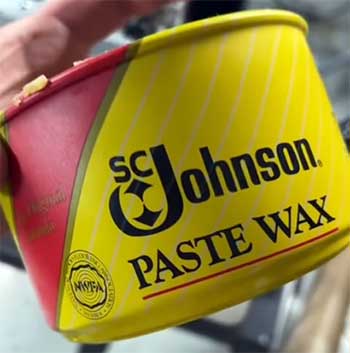
Before I get into the replacements, let me tell you why Johnson Paste Wax was my workshop soulmate.
It had this creamy consistency that spread like butter on warm toast, drying to a hard, protective sheen that kept rust at bay and wood looking alive.
I’d smear it on my cast iron tools, buff it with a rag, and watch the surface turn slick as ice.
On furniture, it added a subtle luster that didn’t scream “look at me” but still whispered sophistication. Plus, it was cheap—back in the day, I’d snag a pound of it for under $10.
So, my mission was clear: find something that could replicate that vibe without leaving me high and dry.
My Top Johnson Paste Wax Alternatives
Here’s my rundown of the best alternatives I’ve tried, ranked by how well they stack up to Johnson’s vibe and performance:
- Butcher’s Bowling Alley Wax – Closest to Johnson’s in texture and durability, this creamy wax glides on and buffs to a slick, tough finish. At $20 for 16 ounces, it’s my top pick for tools and a solid furniture option too.
- Minwax Paste Finishing Wax – Affordable ($10-$12 for 8 ounces) and widely available, it’s a reliable workhorse. Firmer than Johnson’s, it takes more effort but delivers decent protection and shine.
- Renaissance Wax – Premium microcrystalline magic ($25 for 200ml), it’s unbeatable for rust resistance and a clear, elegant finish. Pricey and small, but worth it for special pieces.
- Liberon Black Bison Paste Wax – Tough as nails with a glossy sheen ($25 for 500ml), this carnauba-beeswax blend excels on tools and furniture needing extra durability.
- Briwax – Versatile with tinted options ($15 for 14 ounces), it’s great for furniture restoration and offers a satin finish. Solid, but not the best for heavy rust protection.
- Trewax Clear Paste Wax – Soft and carnauba-rich ($12 for 12.35 ounces), it’s easy to apply but wears faster. Good for light use or quick touch-ups.
- Clapham’s Beeswax Polish – Natural and soft ($18 for 200g), it’s eco-friendly with a honeyed charm, best for furniture or low-impact tools.
Let’s explore those alternatives in detail!
Minwax Paste Finishing Wax: My First Stop
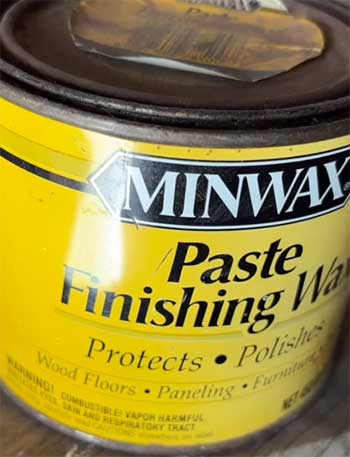
First up, I grabbed a can of Minwax Paste Finishing Wax from the hardware store.
It’s everywhere—Home Depot, Ace, you name it—so availability was a big plus.
Opening the can, I noticed it was a bit firmer than Johnson’s, like comparing a soft cheese to a hard cheddar.
I scooped some out with a rag and started working it onto my table saw bed.
It took a little more elbow grease to spread, but once I got it going, it smoothed out nicely.
The finish? Decent.
It left a glossy, protective layer that kept my tools sliding smoothly, though it wasn’t quite as slick as Johnson’s. I also tried it on a wooden bookshelf, buffing it to a soft shine. It held up well against fingerprints and dust, but I noticed it didn’t penetrate the wood as deeply as my old favorite.
After a week, I saw no rust on my tools, which was a win, but the scent—oh man, it’s got this chemical kick that lingers. If you’re sensitive to smells, you might want to crack a window. Price-wise, it’s reasonable, hovering around $10-$12 for an 8-ounce can, making it a solid contender if you’re after something accessible and reliable.
Trewax Clear Paste Wax: A Carnauba Contender
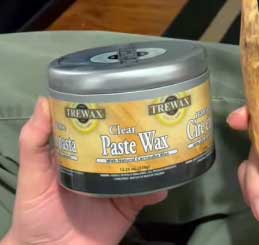
Next, I turned to Trewax Clear Paste Wax, lured by its promise of Brazilian carnauba wax—the same stuff Johnson’s used.
I figured this could be the golden ticket.
When I popped the lid, the texture threw me off—it’s softer, almost greasy, like a thick lotion.
I dabbed some onto my jointer table and spread it around.
It went on easy, no question, but it felt like it sat on top rather than sinking in.
After buffing, the finish was slick and shiny—great for tool protection—but I wasn’t sold on its durability. A few days later, I ran some rough lumber across it, and the wax seemed to wear off faster than Johnson’s ever did.
On furniture, it gave a nice glow, but that greasiness stuck around longer than I’d like, leaving my hands feeling tacky. At about $12 for a 12.35-ounce can, it’s not a bad deal, but I’d say it’s better for occasional use than heavy-duty shop life.
If you’re in a pinch and love carnauba’s natural vibe, it’s worth a shot—just don’t expect it to go the distance like Johnson’s did.
Renaissance Wax: The Fancy Upgrade
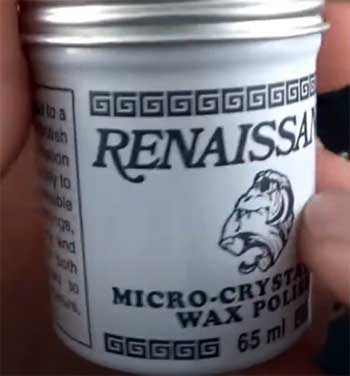
Okay, so Renaissance Wax came up a lot in my research, and I couldn’t resist trying it.
It’s marketed as a premium microcrystalline wax, originally developed for museums to protect artifacts, so I was intrigued.
When it arrived (a small 200ml jar for a hefty $25), I felt like I was unboxing a luxury good.
The texture is unique—soft and waxy, but not sticky.
I smeared some onto my planer bed, and it spread like a dream, thin and even.
Buffing it was a breeze, and the result? A crystal-clear, hard finish that made my tools glide like they were on skates. I tested it against humidity—left my shop door open during a rainy week—and not a speck of rust appeared.
On a walnut side table, it brought out the grain with a subtle, elegant sheen, no greasy residue in sight.
The downside?
That price tag stings, and the small size means it won’t last long if you’re waxing big surfaces. Still, if you’re willing to splurge for top-tier protection, this stuff is a game-changer. I’m keeping it in my arsenal for special projects.
Briwax: The Tinted Twist
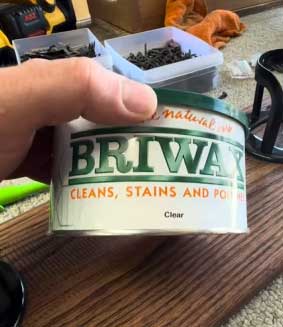
Then there’s Briwax, which I stumbled across while browsing a woodworking forum.
It’s a UK staple, but you can find it stateside too.
What caught my eye was the tinted options—clear, brown, black—which sounded perfect for hiding scratches on older furniture.
I grabbed a clear can for $15 (14 ounces), and the texture reminded me of Johnson’s: soft, workable, and a little solvent-heavy in smell.
I rubbed it onto my bandsaw table, and it spread well, though it took more buffing to get that sheen I love. The finish was satin rather than glossy, which I didn’t mind—it felt understated and classy.
On an antique oak chair, I tried the brown tint over a clear base coat (pro tip: don’t skip the clear first unless you want bold color). It masked some scuffs beautifully and gave the wood a warm depth.
Durability-wise, it held up fine in my shop, though it’s not as rust-proof as Renaissance. If you’re into furniture restoration or want a wax with personality, Briwax is a fun pick—just be ready for that toluene whiff.
Bowling Alley Wax: An Unexpected Hero
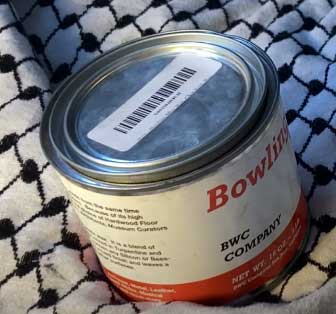
Here’s where things got wild.
Someone mentioned bowling alley wax, and I thought, “Why not?”
I tracked down Butcher’s Bowling Alley Wax online for about $20 (16 ounces).
The name alone made me curious—bowling alleys take a beating, so this stuff had to be tough, right?
It’s a thick, creamy wax, and when I applied it to my table saw, it felt familiar, almost nostalgic.
Spreading it was a joy—it glided on like Johnson’s, and after buffing, the surface was slick and sturdy. I ran some boards over it, and it didn’t budge. On a maple cutting board, it gave a durable, food-safe shine (after checking it was silicone-free).
No rust, no wear, and a faint, pleasant scent—honestly, it’s the closest I’ve come to recreating that Johnson’s magic. At that price, it’s not the cheapest, but it’s a sleeper hit I’ll be using again. If you’re near a specialty retailer or don’t mind shipping, give it a whirl.
Liberon Black Bison Paste Wax: The Durable Dark Horse
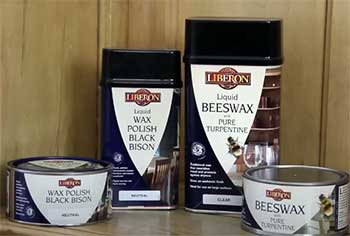
After some more digging, I came across Liberon Black Bison Paste Wax, recommended by folks who swear by its toughness.
I snagged a 500ml tin for around $25, and I was excited to see if it lived up to the hype.
The consistency is rich and smooth, like a high-end hand cream, and it’s packed with carnauba and beeswax for extra durability. I worked it onto my router table, and it went on effortlessly with a cloth.
Buffing brought out a hard, glossy finish that felt rock-solid—perfect for tools that see heavy use. I also tried it on a cherry coffee table, and it gave a deep, lustrous shine that resisted water rings from my morning coffee.
The scent is milder than Minwax, with a hint of waxiness that fades fast. It’s not cheap, and you’ll need to order it online in some areas, but for a long-lasting finish on both metal and wood, it’s a strong contender. I’m impressed by how it holds up under pressure.
Clapham’s Beeswax Polish: The Natural Newcomer
Lastly, I decided to try something a little more eco-friendly with Clapham’s Beeswax Polish. I found a 200g jar for about $18 at a specialty woodworking shop, and I was drawn to its simple ingredients: beeswax, carnauba, and mineral oil.
It’s softer than most waxes I’d tried, almost like a balm, and it smelled faintly of honey—way more pleasant than solvent-heavy options.
I rubbed it onto my drill press table, and it spread easily, though it took a bit more effort to buff out the stickiness. The finish was satin and smooth, not as slick as Johnson’s but decent for light-duty tools. On a pine box, it soaked in nicely, enhancing the grain with a natural glow.
It’s not the toughest for rust protection—my shop’s humid corner showed a tiny speck after a week—but for furniture or small projects, it’s a charming, green choice. I’d use it again for pieces I want to feel handcrafted.
Making My Own: The DIY Experiment
Finally, I got ambitious. Johnson’s was a mix of carnauba, microcrystalline, paraffin, and naphtha, so I wondered—could I whip up my own? I grabbed some paraffin from a craft store, carnauba flakes online, and a bottle of mineral spirits (naphtha’s cousin).
In a double boiler, I melted equal parts paraffin and carnauba, then stirred in spirits until it was a soft paste. The result? A lumpy, funky-smelling mess at first, but after tweaking the ratios (more paraffin, less spirits), it smoothed out.
I tested it on my drill press table—spreadable, buffable, and decently protective. It wasn’t as refined as Johnson’s, and the finish lacked that pro-level polish, but it worked in a pinch.
Cost-wise, it’s cheap if you’ve got the ingredients ($10 total), though the time and trial-and-error might not be for everyone. I had fun playing mad scientist, but I’ll stick to store-bought for now.
What’s the Best Alternative?
After all this waxing and buffing, I’ve got a soft spot for Bowling Alley Wax—it’s the closest vibe to Johnson’s in feel and performance.
Minwax is my budget pick for everyday shop use, while Renaissance Wax is the luxe choice for heirlooms or humid climates. Liberon’s a durability champ, Briwax wins for furniture flair, and Clapham’s adds a natural twist.
Trewax? It’s fine if you’re not too picky. DIY’s an option if you’re crafty, but it’s not my daily driver. Test any pick on a small spot first—your tools and treasures deserve the best.
FAQ: Your Burning Questions Answered
I’d say Butcher’s Bowling Alley Wax is a fantastic stand-in—it’s got that creamy texture and tough protection I loved in Johnson’s. Minwax is a solid, affordable option too, and Renaissance Wax is great if you want premium quality. Liberon and Briwax are also up there, depending on your needs—tools, furniture, or both.
From what I’ve dug up, SC Johnson Paste Wax was a blend of carnauba wax (for hardness), microcrystalline wax (for durability), paraffin wax (for spreadability), and naphtha (a solvent to keep it soft). That mix gave it its signature feel and finish.
It was my go-to hard-finish wax from SC Johnson, perfect for wood floors, furniture, and metal tools. You’d apply a thin layer, let it haze, then buff it to a protective shine. Discontinued around 2021, it’s now a relic I miss dearly.
Yes and no. SC Johnson is the company, and “Johnson Wax” is shorthand for their wax products, like the paste wax I’m mourning. They’ve made tons of stuff over the years, but the paste wax was a standout under that umbrella.
Final Thoughts
Losing Johnson Paste Wax felt personal, but this journey showed me there’s life beyond the yellow can. Each alternative brought something to the table—some surprised me, others just got the job done.
I’m still tinkering, but I’ve found peace knowing my tools and furniture won’t suffer. What about you? Got a wax you swear by? Let’s keep the conversation going—I’m all ears.
